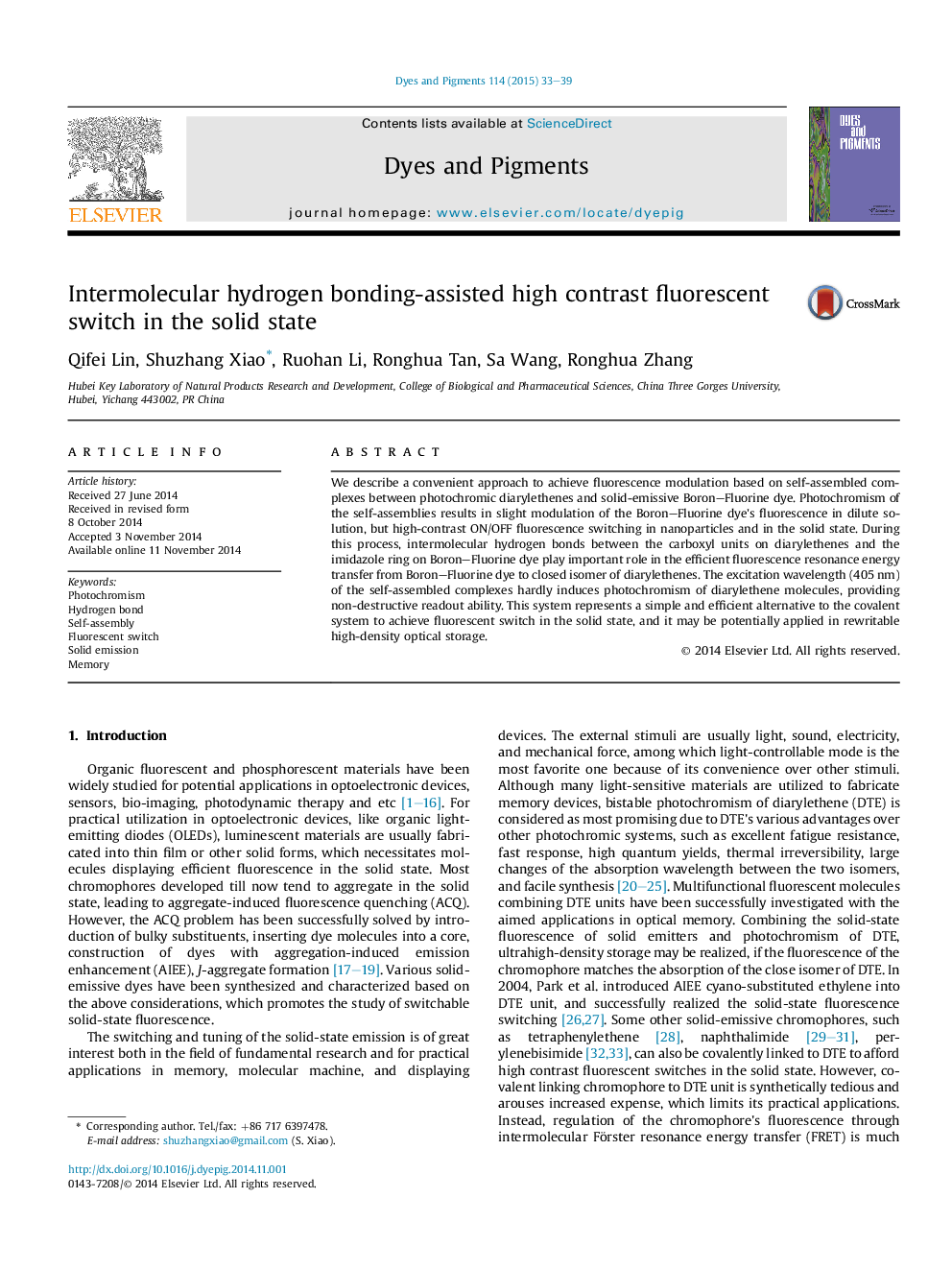| Article ID | Journal | Published Year | Pages | File Type |
|---|---|---|---|---|
| 175976 | Dyes and Pigments | 2015 | 7 Pages |
•Self-assembled complexes between photochromic diarylethenes (DTEs) and solid-emissive Boron–Fluorine dye (BOPIM) were prepared.•High-contrast ON/OFF fluorescence switching in solid state was obtained.•The self-assemblies possess non-destructive readout ability.•The self-assemblies can be applied in rewritable high-density optical storage.
We describe a convenient approach to achieve fluorescence modulation based on self-assembled complexes between photochromic diarylethenes and solid-emissive Boron–Fluorine dye. Photochromism of the self-assemblies results in slight modulation of the Boron–Fluorine dye's fluorescence in dilute solution, but high-contrast ON/OFF fluorescence switching in nanoparticles and in the solid state. During this process, intermolecular hydrogen bonds between the carboxyl units on diarylethenes and the imidazole ring on Boron–Fluorine dye play important role in the efficient fluorescence resonance energy transfer from Boron–Fluorine dye to closed isomer of diarylethenes. The excitation wavelength (405 nm) of the self-assembled complexes hardly induces photochromism of diarylethene molecules, providing non-destructive readout ability. This system represents a simple and efficient alternative to the covalent system to achieve fluorescent switch in the solid state, and it may be potentially applied in rewritable high-density optical storage.
Graphical abstractFigure optionsDownload full-size imageDownload as PowerPoint slide
